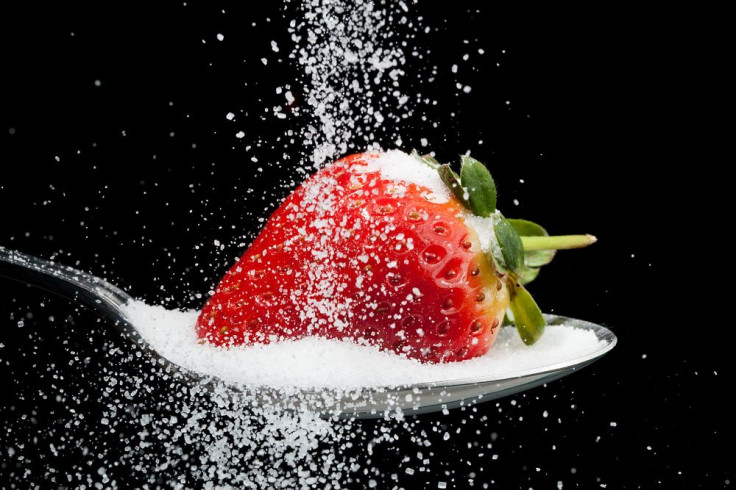Sugar In Food: 6 Foods Sugar Secretly Sneaks Into And Advice On How To Avoid

People discovered the sweetly satisfying taste of sugarcane on an island in New Guinea nearly 10,000 years ago, and since then, it has ubiquitously sprinkled itself around the world in forms of candy bars and unexpected places like barbeque sauces. When people first picked the raw cane, they chewed on the hard stem until an explosion of sweetness saturated their taste buds and hooked their senses. It spread like wildfire from island to island until it reached the mainland and by 500 A.D., it was already being processed into powders and used as medicine to treat ailments that ranged from headaches to impotence.
Today, it infamously laces its way through our pastries and Piña Coladas, but what about the other less obvious sugar-laden foods? Nutritionists, dieticians, doctors, and dentists alike have warned of sugar's power to raise energy levels only to plummet soon after and cause a spiral of bad eating habits.
“Sugar hides in almost everything,” Alyssa Miller, a certified personal trainer and yoga instructor who’s currently working on her Fitness Nutrition Specialist Certification, told Medical Daily. “Many protein powders and protein bars have a high amount of sugar added in order to make them taste appealing. I pay attention to labels containing sucralose, high fructose corn syrup, glucose, malt syrup, etcetera. A lot of products containing these ingredients are things like wheat thins, yogurt-coated snack bars, club crackers, and anything low-fat, fat free, or diet!”
Ample research has been done to track our dangerous love for sugar. Harvard Medical School has found that even if you aren’t overweight from a diet of sugar and high-calorie fats, it can still increase your risk of dying from heart disease. They reached that startling conclusion after a 15-year study revealed participants who ate 25 percent or more of their calories in sugar, more than doubled their risk of dying from heart disease than those whose diets included 10 percent of sugar.
Where are they getting all of this sugar? Many are getting sugar from sodas, energy drinks, and sports drinks, which account for more than one-third of our national added sugar consumption. However, there are some who are unintentionally having sugar binges with foods that are saturated in sugar, such as sneaky snacks, sauces, and sandwich buns.
“The marketing world has also trained us to think we need more sugar, less fat. Everything is marketed as fat-free, low-fat. But what replaces it to add taste isn't necessarily better, it’s sugar.” Miller said. “Our bodies need fat to metabolize protein and our brains need fat to function, just like carbohydrates and healthy sugars. Yet, a bunch of us replace recipe ingredients with low-fat alternatives thinking we're taking care of our bodies.”
Wish Bone’s light ranch, for example, would seem like the healthier alternative. While it does have less fat, it contains 32 grams of sugar, that’s twice as much as the 16 grams of sugar that come from the original ranch recipe. The United States Department of Agriculture (USDA) recommends the average person on a 2,000-calorie diet to consume no more than 10 teaspoons of sugar each day, or the equivalent to a 12-ounce soda. Sugar is the quiet chameleon of our food system. It changes forms from sucrose, corn sweeteners, glucose, dextrose, honey, maple sugar, and molasses. It’s guilefully hidden in pizza bread, hot dogs, soups, crackers, canned vegetables, mayonnaise, and peanut butter.
Health advocates turn their backs on added sugars, which are sugars that are literally added to foods or beverages when they’re processed or prepared, because of their emptiness. Added sugars contribute no nutritional value to our diets and are thus essentially useless. But yet we’re consuming almost 152 lbs. of sugar each year, which is equal to 6 cups or 3 lbs. a week. Two hundred years ago, the average American only ate 2 lbs. of sugar each year, according to the USDA. Thanks to our demand, the supply brings us sugar shockers that are ready to ruin our diets everywhere.
Our bodies can only handle 20 grams of sugar a day for adult women and 36 grams of sugar a day for adult men, according to the American Health Association. Anything extra is turned into fat in our bodies unless it's used as energy in an intense workout or other physical activity, Miller says.
The top 6 culprits of sugar sneaking into our diet are the following:
- Odwalla Original Superfood Drink: 37 grams of sugar, 190 calories
- McDonald’s Fruit & Maple Oatmeal: 32 grams of sugar, 290 calories
- Starbucks Greek Yogurt and Honey Parfait: 30 grams of sugar, 260 calories
- Ocean Spray Craisins: 29 grams of sugar, 130 calories
- Yoplait Yogurt, Strawberry: 26 grams of sugar, 170 calories
- Power Bar Performance, Chocolate Peanut Butter: 26 grams of sugar, 240 calories
Miller suggests sugar alternatives for those with a domineering sweet tooth. The recently popular sugar-replacement Stevia, natural honey, all-natural maple syrup, and agave can easily sweeten up anything, including baked goods.



























